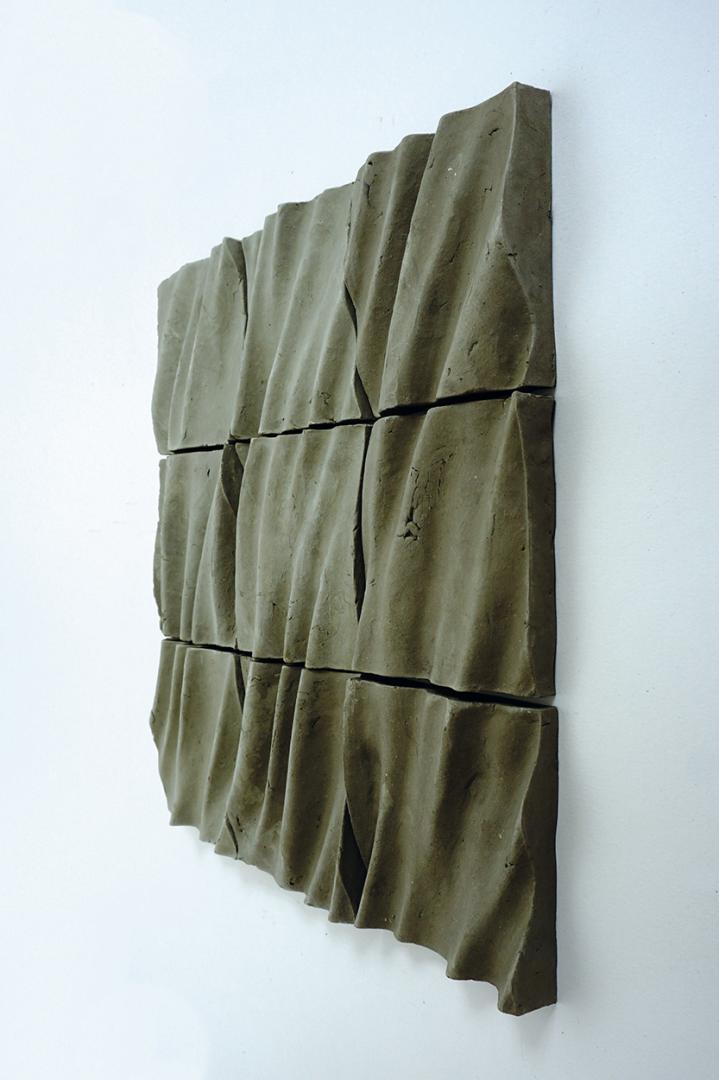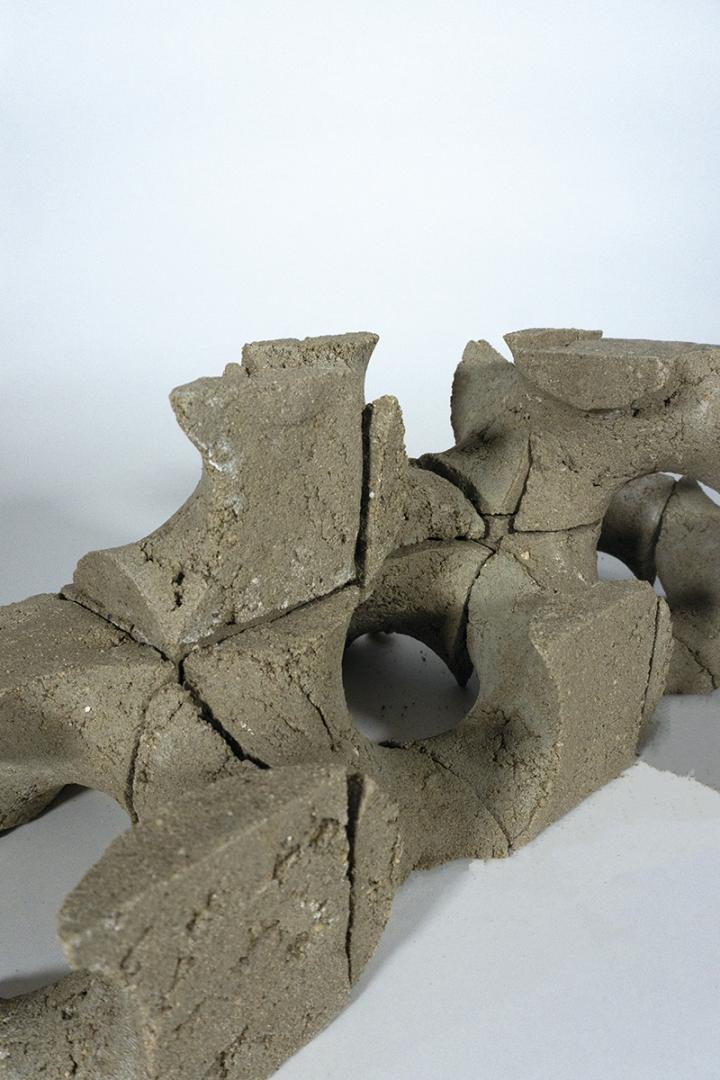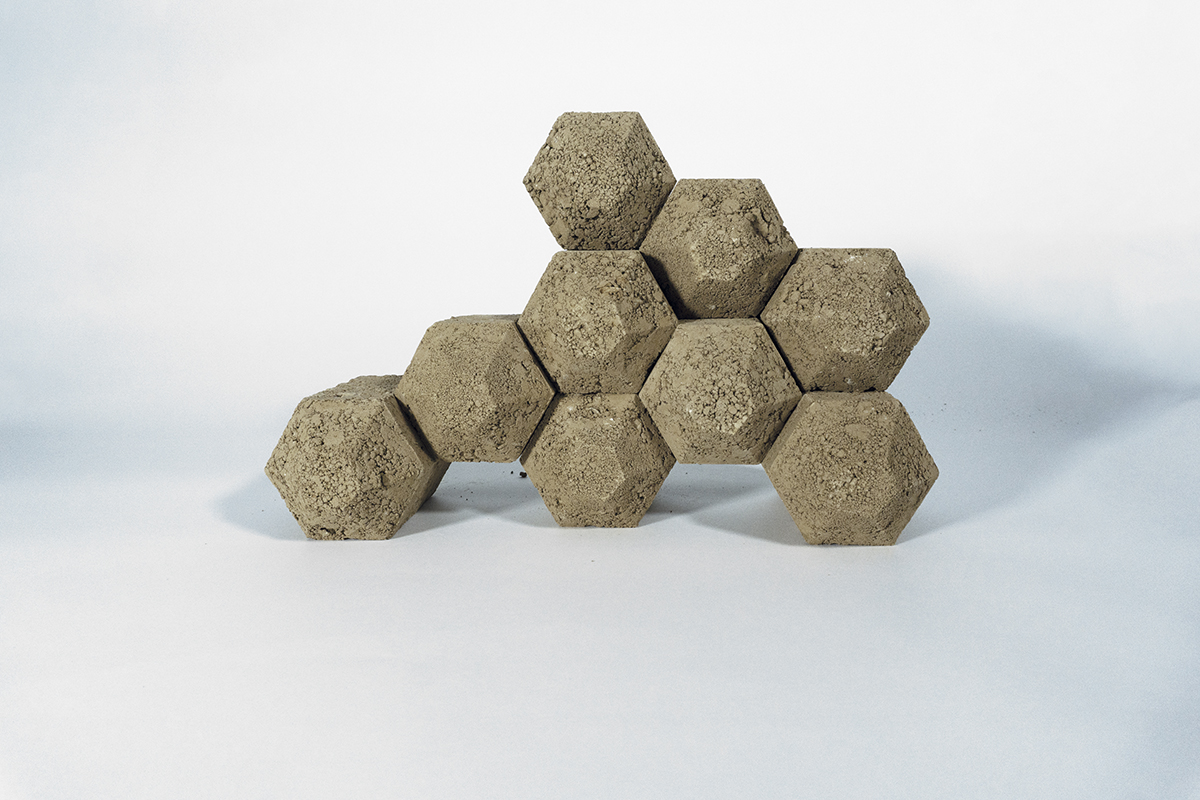clay, sound & draft
Basic information
Project Title
Full project title
Category
Project Description
Clay or loam have been used to built housing since the neolithic period. The material can be found almost everywhere on the planet. Studys have shown, that living in a house made of loam has several positive effects. It absorbs excess humidity, toxines and acoustic noise.
Regional and self-assembled loam was used to create objects, that have the maximum absorbtion qualitys in the material, and are distinguished through their maximum surface for optimal use in rooms, that are not made of loam.
Geographical Scope
Project Region
Urban or rural issues
Physical or other transformations
EU Programme or fund
Which funds
Description of the project
Summary
My project started with the idea of making acoustic tiles out of a sustainable, regional material. In the research process I found loam or clay to be a very promising material. As written in the basic information, it has been used to build housing structures for millenniums. Houses made of loam materials, such as rammed earth or adobe, have been proven to absorb sound of any sequence in a way that provides a pleasing acoustical environment. Researching about this material I also found out that it absorbs excess air humidity, and with it, harmful substances that are bounded in aerosols. Loam stores the excess humidity and gives it back to the air if needed. Responsible for this transition of humidity are the clay minerals, which make up 5 to 35 % of loam. But there are many different types of clay minerals, all with different high absorbtion capacities. Clay building materials producing companies often advertise these qualities, but non of them do research with the different clay minerals. I managed to test different minerals in their capacities and found Montmorillionite the one with the highest qualities. After testing, I could calculate the amount of material needed to keep a room of a given size in a steady relative air humidity of about 50%, which is the best for out health. I mixed my own adobe material but also found a spot in the city I live in where I could dig out loam. Fortunately I could distinguish that the dug out material was mainly made of Montmorillionte!
The physical output of my research are different shapes of tiles and bricks, both unfired, so they for one keep their function, secondly stay recyclabe and at last have the lowest possible energy usage. The shapes are algorithmically designed with Grasshopper3D (Rhinozeros) to find a maximal surface and high stabilty. The concept is to install these tiles or bricks in rooms that are not made of loam to provide these fantastic features and be a part of a more healthy environment.
Key objectives for sustainability
Since clay and loam are materials that can be found almost everywhere on the planet, my project would strenghten the use of local materials with only low expenditure. It shows that materials, often only remembered as "dirt", can have the same effects as electrical (de-)humidifiers made of plastic and rare earth metals that are mostly won under difficult circumstances. Something that one digs out from the ground behind the house can also be tossed behind the house if there is no need for it anymore.
Key objectives for aesthetics and quality
I gave different examples of how the elements could look like. The tiles, which are algorithmically designed, represent waves - those of the sound and those of the hills in landscapes from which the material comes. But the appearance is mostly chosen to be functional. The wavy structure provides different angles in which the soundwaves can absorb and diffuse. Same thing is the second approach. These bricks have the shape of the gyroid, which was found by a physicist in the 1970s but is also represented in nature. It has a huge stabilty and a large surface. The large surface is very important in my project, because on one hand large surfaces absorb more sound and on the other hand, for the humidity absorbing futures only the first 2-3 centimeters of the material are important to the fast absorbtion.
You can see that there are many possibilities in shape, if the significant parameters are known. That is also why I dont see my project as finished.
Key objectives for inclusion
I think my project is not a classic design project, trying to sell finished products. I would like to see it as an example of teaching people all around the world about the positive outcomes if we use materials that have been given to us by the earth. I want to give examples on how to use this material, and why we should use it. Also teach people how to actively be a part of building our surroundings. And that even "dirt" can be healthy for us.
Physical or other transformations
Innovative character
I think that my project shows great opportunities of the sustainable use of materials we find underneath our feet, everywhere. The use of computational designed structures and surfaces combined with naturally availabe materials shows the possibilities of the connection between ancient and prospective techniques.



